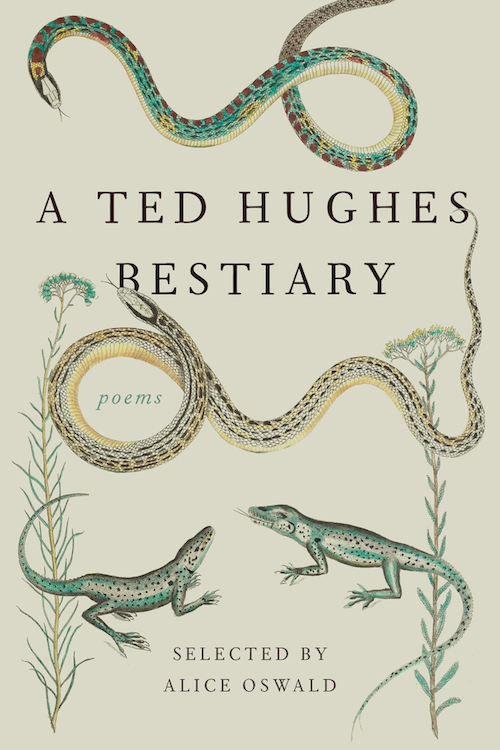Poems as Animals: A Ted Hughes Bestiary

David Biespiel looks at A Ted Hughes Bestiary, edited by Alice Oswald, for Bookforum. Each creature in this compendium of animals real and invented by Hughes is "as parlor-esque as they are mercurial." More:
I am thinking particularly of Hughes’s savagely transmogrified Crow poems, a sequence of gnarled, apocalyptic parables, one of the treasures of this book if not all of twentieth-century English poetry. Here, Hughes mixes linguistic sophistication with raw, almost orgiastic barking:
Who owns those scrawny little feet? Death. Who owns this bristly scorched-looking face? Death. Who owns these still-working lungs? Death. Who owns this utility coat of muscles? Death. Who owns these unspeakable guts? Death. Who owns these questionable brains? Death. All this messy blood? Death. These minimum-efficiency eyes? Death. This wicked little tongue? Death. This occasional wakefulness? Death.But from this obscene hemorrhaging ("who is stronger than Death?/Me, evidently") Crow retreats to an atmospheric domiciliary. From there, he renders his verdict on the industrial, moorland violence of his own true nature:
When Crow was white he decided the sun was too white. He decided it glared much too whitely. He decided to attack it and defeat it. He got his strength flush and in full glitter. He clawed and fluffed his rage up. He aimed his beak direct at the sun's centre. He laughed himself to the centre of himself And attacked. At his battle cry trees grew suddenly old, Shadows flattened. But the sun brightened— It brightened, and Crow returned charred black. He opened his mouth but what came out was charred black. "Up there," he managed, "Where white is black and black is white, I won."The Crow poems have often been read as a testimony of Hughes’s tortured psyche following the suicides of his wife Sylvia Plath’s in 1963 and later, in 1969, of his companion Assia Wevill, who also killed the couple’s daughter. This gossipy back story may be what first draws people to Hughes’s poems, and the Crow poems particularly, although Hughes also had other motives for starting the series: He began the poems after Plath’s death at the invitation of artist Leonard Baskin, whose crow engravings would eventually accompany the poems in deluxe print editions. However you come to Hughes, if you spend enough time with his prolific writing—the poetry, translations, anthologies, criticism, children’s books—the unwieldy biographical details about death, eloquent cruelty, and haunting are overtaken by his art....
Continue at Bookforum.


